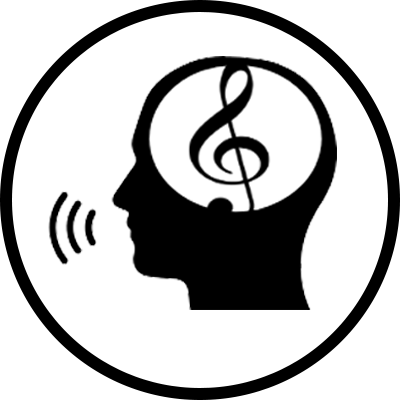Éducation et apprentissage
Education and Learning
L’effet de la formation musicale sur le contrôle inhibiteur chez les enfants : une méta-analyse
Kevin Jamey (BRAMS)
Although a vast literature exists on the relationship between executive functioning and music training, it is still unclear whether or not music training causes a strengthening in executive control during child development. Inhibition control is an important executive function for music practice and is often required when synchronizing in an ensemble, prioritizing among auditory streams and processing complex rhythms. This study performed a meta-analysis of longitudinal changes in inhibition control during music training in children.
8m 25s
Although a vast literature exists on the relationship between executive functioning and music training, it is still unclear whether or not music training causes a strengthening in executive control during child development. Inhibition control is an important executive function for music practice and is often required when synchronizing in an ensemble, prioritizing among auditory streams and processing complex rhythms. This study performed a meta-analysis of longitudinal changes in inhibition control during music training in children.
8m 25s
Do-Ré-Mythe : Logiciel de ludification de formation d’oreille
Nestor Napoles and Yuval Adler (CIRMMT)
The training of musicianship skills in college-level students remains a significant pedagogical challenge for several reasons, including: diverse student skill levels, motivation, regular practice, and engagement with exercises. Our approach was to use gamification to promote engagement during a commonly employed exercise - the identification of pitches.
5m 44s
The training of musicianship skills in college-level students remains a significant pedagogical challenge for several reasons, including: diverse student skill levels, motivation, regular practice, and engagement with exercises. Our approach was to use gamification to promote engagement during a commonly employed exercise - the identification of pitches.
5m 44s
Étude du lien entre le caractère restaurateur de trois espaces calmes en milieu scolaire et les sons agréables et désagréables perçus par les élèves qui les fréquentent
Linking the restorative character of three quiet spaces in school environments and the pleasant and unpleasant sounds perceived by the students who frequent them
Florence Renaud (BRAMS)
Dans les écoles, le bruit est un facteur de nuisance pour le bien-être et pour la réussite académique. Celui-ci est pourtant inévitable puisque le bruit découle souvent des activités scolaires elles-mêmes. Une piste de gestion sonore dans les milieux scolaires est l'implémentation d'espaces de restauration auditive. L'objectif de cette étude est de qualifier le relation entre la perception sonore dans ce type d'espaces de restauration et le caractère restaurateur de ces espaces.
7m 37s
Dans les écoles, le bruit est un facteur de nuisance pour le bien-être et pour la réussite académique. Celui-ci est pourtant inévitable puisque le bruit découle souvent des activités scolaires elles-mêmes. Une piste de gestion sonore dans les milieux scolaires est l'implémentation d'espaces de restauration auditive. L'objectif de cette étude est de qualifier le relation entre la perception sonore dans ce type d'espaces de restauration et le caractère restaurateur de ces espaces.
7m 37s
Tuteur haptique
Ajin Tom and Martin Daigle (CIRMMT)
The Haptic Tutor is a wearable haptic system for triggering vibrations on limbs of a student drummer aimed to help develop multi-limb independence. The system uses portable, wireless vibrotactile devices to display haptic information on drummers’ limbs. To asses the usefulness of the system, we analyze response time differences between stimuli and motor action (drum stroke). Our hypotheses are that the use of haptic stimuli will improve the temporal characteristics of performances, but also that the type of haptic stimuli will have an influence on performance results.
8m 49s
The Haptic Tutor is a wearable haptic system for triggering vibrations on limbs of a student drummer aimed to help develop multi-limb independence. The system uses portable, wireless vibrotactile devices to display haptic information on drummers’ limbs. To asses the usefulness of the system, we analyze response time differences between stimuli and motor action (drum stroke). Our hypotheses are that the use of haptic stimuli will improve the temporal characteristics of performances, but also that the type of haptic stimuli will have an influence on performance results.
8m 49s
Educating professionals of the built environment in soundscape design through an immersive virtual reality tool
L’éducation des professionnels de la construction en environnement sonore à travers un outil immersif en réalité virtuelle
Richard Yanaky and Kathleen ‘Ying-Ying’ Zhang (CIRMMT)
In city-making processes, sound is usually considered quite late, when it has already become noise. Weak pedagogical and regulatory tools encourage Professionals of the Built Environment (PBEs) to think only in terms of sound levels (i.e. decibels), discounting the enormous potential of sound design and planning. CIRMMT-based research indicates that PBEs may lack the resources that would allow them to intentionally utilize sound as a resource in the early stages of their designs, rather than just as a nuisance to be mitigated after the fact. In response, this project utilizes a user-centered design process to develop a prototype tool where PBEs can learn about new developments in urban sound research in an immersive and interactive audio-visual setting.
4m 40s
In city-making processes, sound is usually considered quite late, when it has already become noise. Weak pedagogical and regulatory tools encourage Professionals of the Built Environment (PBEs) to think only in terms of sound levels (i.e. decibels), discounting the enormous potential of sound design and planning. CIRMMT-based research indicates that PBEs may lack the resources that would allow them to intentionally utilize sound as a resource in the early stages of their designs, rather than just as a nuisance to be mitigated after the fact. In response, this project utilizes a user-centered design process to develop a prototype tool where PBEs can learn about new developments in urban sound research in an immersive and interactive audio-visual setting.
4m 40s

